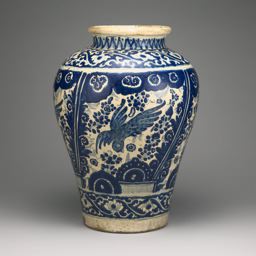Lesson Plan: From China to Mexico: Silk Road Ceramics

Name: Rita Marquez
School: Madero Middle School
Subject Area: Art, Social Studies
Grade Level: Middle School
State Goals
- 25: Know the language of the arts. Understand the sensory elements, organizational principles and expressive qualities of the arts.
- 26: Through creating and performing, understand how works of art are produced. Understand process, traditional tools and modern technologies used in the arts.
- 27: Understand the role of arts in civilizations, past and present. Analyze how the arts function in history, society and everyday life.
Objectives
Students will:
- Understand the Silk Road through pottery and porcelain, in particular the crossroads and influences of Mexican pottery, Talavera.
- Comprehend Talavera pottery as an art form influenced by many world cultures—Chinese, Arabic, Spanish, Italian and indigenous people of Mexico—and learn how these influences are relevant to societies past and future.
- Learn about pottery’s and ceramic’s ability to communicate history, stories, politics, cultures through the use of colors and symbolic imagery.
- Reflect and discuss art forms unique to the student’s culture or background.
- Understand the importance of the Silk Road revealed through the porcelain of China and the Talavera of Puebla, Mexico.
- Reflect on and discuss symbols, patterns, colors, and materials used in art, including historical connections of symbols and colors.
- Apply gained knowledge of Chinese porcelain and Talavera ware to analysis of contemporary pottery and to their own pottery work.
- Gain first-hand experience in the process of Talavera-making: shape, color, outlining, and filling.
Materials/Resources/Gallery Objects
- Sketchbook and pencil
- Computer (available for all students)
- Art supplies: self-hardening clay, brushes, and acrylic paint.
- Images and Information of Mexican Talavera and Chinese Porcelain
- The Metropolitan Museum of Art, Talavera de Puebla
- The Metropolitan Museum of Art, East and West: Chinese Export Porcelain
- Worksheeet 1: Comparison Exercise
- Worksheet 2: Talavera Poblana, Mary Herz
- Worksheet 3: Reflective Questions
Procedures
Lecture, Discussion & Museum Visit
- Teacher will provide a lecture and discussion on Talavera of Puebla, Mexico and porcelain of China, including images from the Art Institute of Chicago.
- Students will take a guided tour of the Art Institute, with focus on the Chinese porcelain and Mexican Talavera ware.
- Students will express learned information through writing and sketching.
- Students will be given Worksheet 1 to assist them in comparing and contrasting art works.
- Students will participate in discussion and brainstorming session on similarities and differences of the work viewed.
- Student will process information to determine what elements will be used in the making of his or her own pottery.
Pinch Pot Production
- Students will work independently to investigate Talavera of Puebla and porcelain of China. Investigation will include visits to Web sites listed under Materials/Resources (above),
- Students will each select a work of interest, reflect upon it, and sketch it.
- Student will each choose a sketch they have made upon which to base a pinch pot they will make with self-hardening clay.
- Students will each allow pots to air dry.
- Students will each paint patterns or designs on pot based on their sketches.
Extension/Homework
- Students will be given Worksheet 2, an annotated list ofinternational influences on Talavera, to read and discuss.
- Students will reflect on their earlier discussions, museum visit, research, and pottery project. Worksheet 3, intended to guide the reflection process, is distributed and completed by the students, who will then sharetheir thoughts and experiences.
